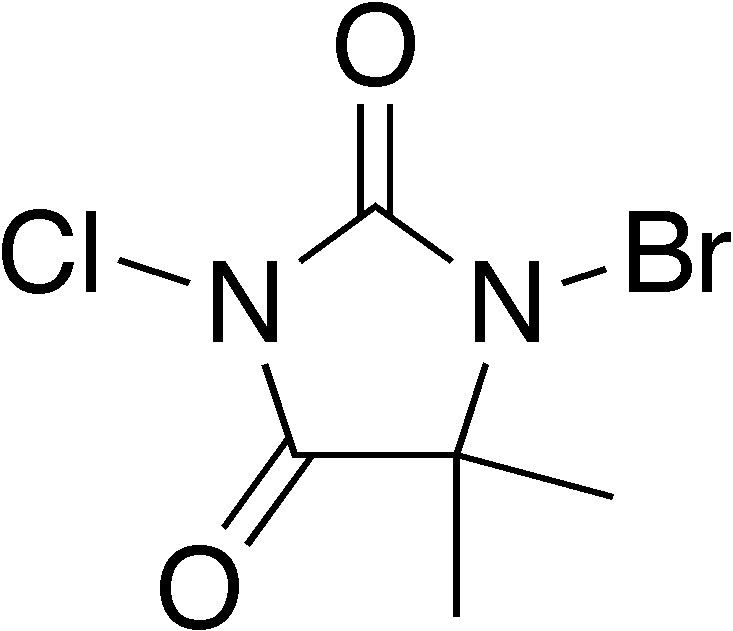Formula C5H6BrClN2O2 Density 1.9 g/cm³ | Molar mass 241.47 g/mol Appearance White solid | |
 | ||
1-Bromo-3-chloro-5,5-dimethylhydantoin (BCDMH) is a chemical structurally related to hydantoin. It is a white crystalline compound with a slight bromine and acetone odor and is insoluble in water, but soluble in acetone.
BCDMH is an excellent source of both chlorine and bromine as it reacts slowly with water releasing hypochlorous acid and hypobromous acid. It used as a chemical disinfectant used for recreational water and drinking water purification. BCDMH works in the following manner:
The initial BCDMH reacts with water (R = Dimethylhydantoin):
BrClR + 2 H2O → HOBr + HOCl + RH2Hypobromous acid partially dissociates in water:
HOBr → H+ + OBr−Hypobromous acid oxidizes the substrate, itself being reduced to bromide:
HOBr + Live pathogens → Br− + Dead pathogensThe bromide ions are oxidized with the hypochlorous acid that was formed from the initial BCDMH:
Br− + HOCl → HOBr + Cl−This produces more hypobromous acid. However, the hypochlorous acid itself does act directly as a disinfectant in the process.
Preparation
This compound is prepared by first brominating, then chlorinating 5,5-dimethylhydantoin:
